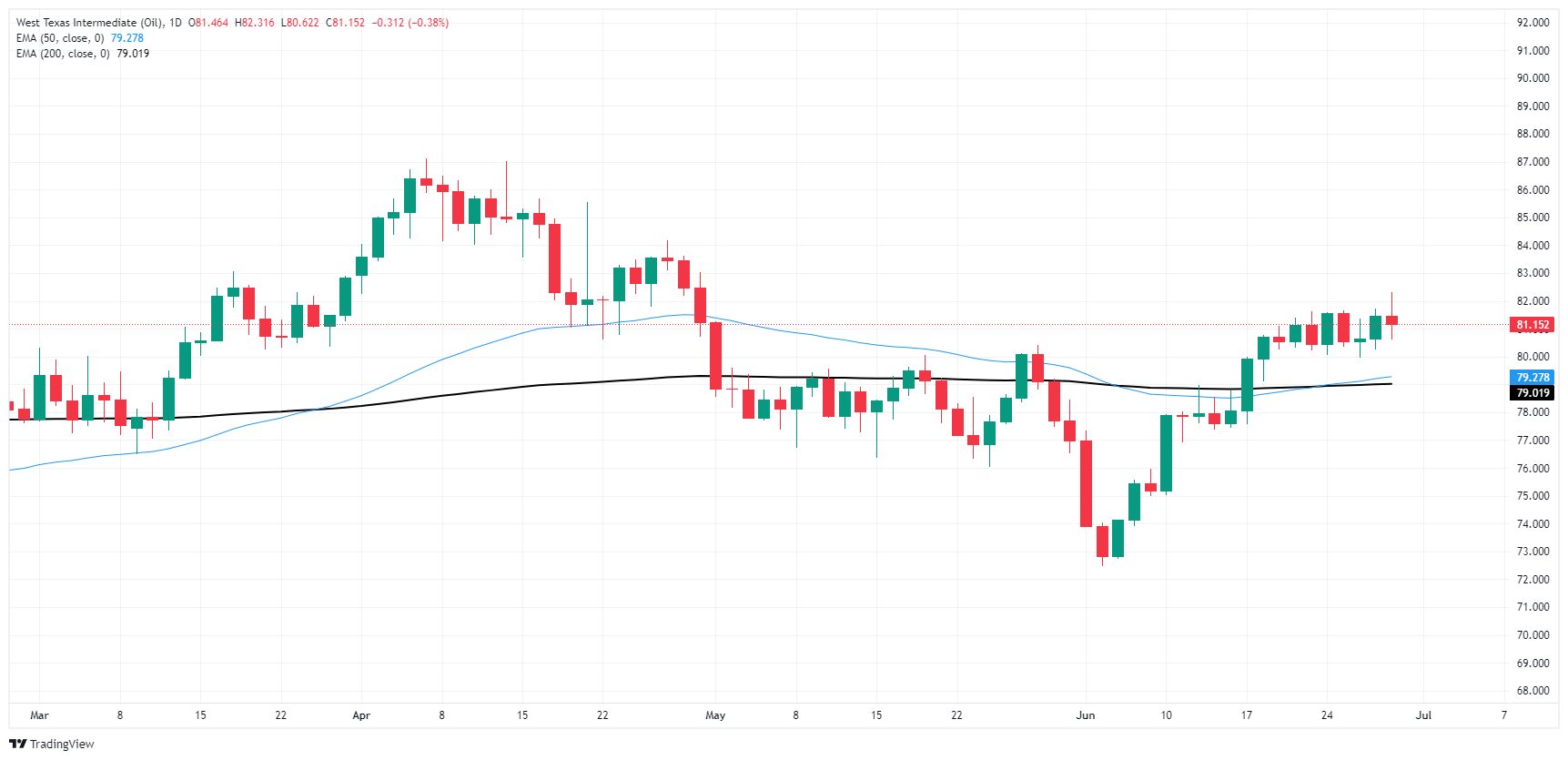- WTI falls back below $81.00 as bullish momentum gets snipped.
- US Crude Oil initially rallied on Friday, but quickly tumbled into familiar levels.
- The EIA noted that US Crude Oil production hit fresh highs in April.
West Texas Intermediate (WTI) rallied into a fresh eight-week high on Friday as broad-market risk appetite stepped higher, but investor sentiment moderated during the US market session, dragging Crude Oil prices into a fresh low for the day. The Energy Information Administration (EIA) noted that despite a slight increase in overall fossil fuel demand, gasoline demand declined further and the US continues to see near-term highs in overall production output.
Ongoing market hopes for a summertime increase in general Crude Oil demand continue to run aground on a rocky reality as consumer demand for fossil fuels consistently undershoots market forecasts.
According to the EIA, an uptick in US Crude Oil and petroleum products rose to its highest level since December, but increases in US Crude Oil production, which also rose to December peaks at 13.25 million bpd in April, is more than enough to offset supply draws. The EIA also noted a general decline in consumer-level gasoline demand, which fell to 8.83 million bpd in April, the lowest figure since February.
WTI technical outlook
WTI US Crude Oil snapped into a fresh eight-week high of $82.31 on Friday before backsliding into downside chart territory for the trading week’s final session, wrapping up the week battling the $81.00 handle. Near-term chart churn has WTI roiling under firm downside pressure from a supply zone above $81.50 per barrel.
Despite frothy intraday price action, daily candlesticks remain trapped in near-term consolidation as WTI struggles to hold onto bullish territory north of the 200-day Exponential Moving Average (EMA) at $79.00.
WTI hourly chart
WTI daily chart
WTI Oil FAQs
WTI Oil is a type of Crude Oil sold on international markets. The WTI stands for West Texas Intermediate, one of three major types including Brent and Dubai Crude. WTI is also referred to as “light” and “sweet” because of its relatively low gravity and sulfur content respectively. It is considered a high quality Oil that is easily refined. It is sourced in the United States and distributed via the Cushing hub, which is considered “The Pipeline Crossroads of the World”. It is a benchmark for the Oil market and WTI price is frequently quoted in the media.
Like all assets, supply and demand are the key drivers of WTI Oil price. As such, global growth can be a driver of increased demand and vice versa for weak global growth. Political instability, wars, and sanctions can disrupt supply and impact prices. The decisions of OPEC, a group of major Oil-producing countries, is another key driver of price. The value of the US Dollar influences the price of WTI Crude Oil, since Oil is predominantly traded in US Dollars, thus a weaker US Dollar can make Oil more affordable and vice versa.
The weekly Oil inventory reports published by the American Petroleum Institute (API) and the Energy Information Agency (EIA) impact the price of WTI Oil. Changes in inventories reflect fluctuating supply and demand. If the data shows a drop in inventories it can indicate increased demand, pushing up Oil price. Higher inventories can reflect increased supply, pushing down prices. API’s report is published every Tuesday and EIA’s the day after. Their results are usually similar, falling within 1% of each other 75% of the time. The EIA data is considered more reliable, since it is a government agency.
OPEC (Organization of the Petroleum Exporting Countries) is a group of 13 Oil-producing nations who collectively decide production quotas for member countries at twice-yearly meetings. Their decisions often impact WTI Oil prices. When OPEC decides to lower quotas, it can tighten supply, pushing up Oil prices. When OPEC increases production, it has the opposite effect. OPEC+ refers to an expanded group that includes ten extra non-OPEC members, the most notable of which is Russia.













